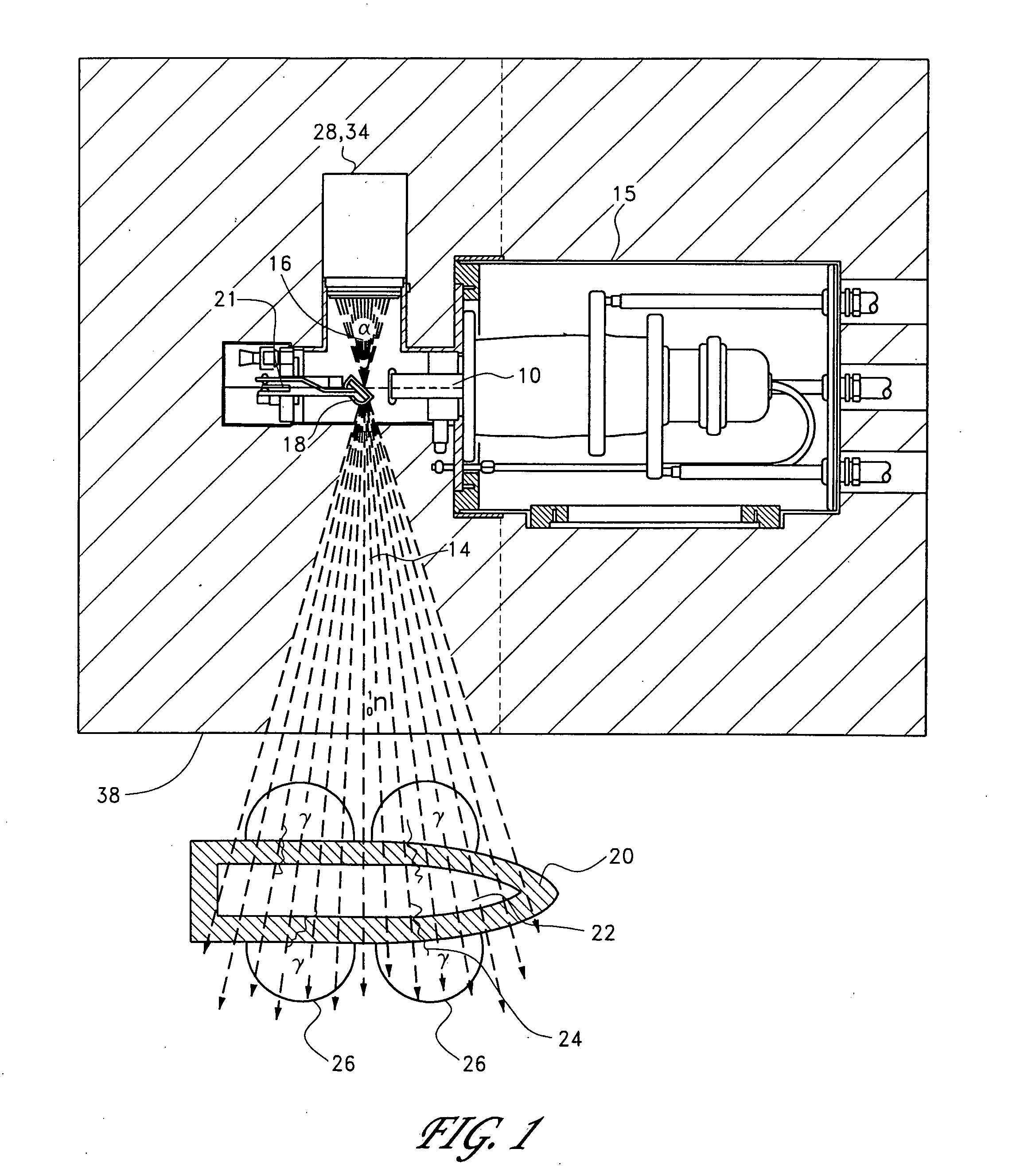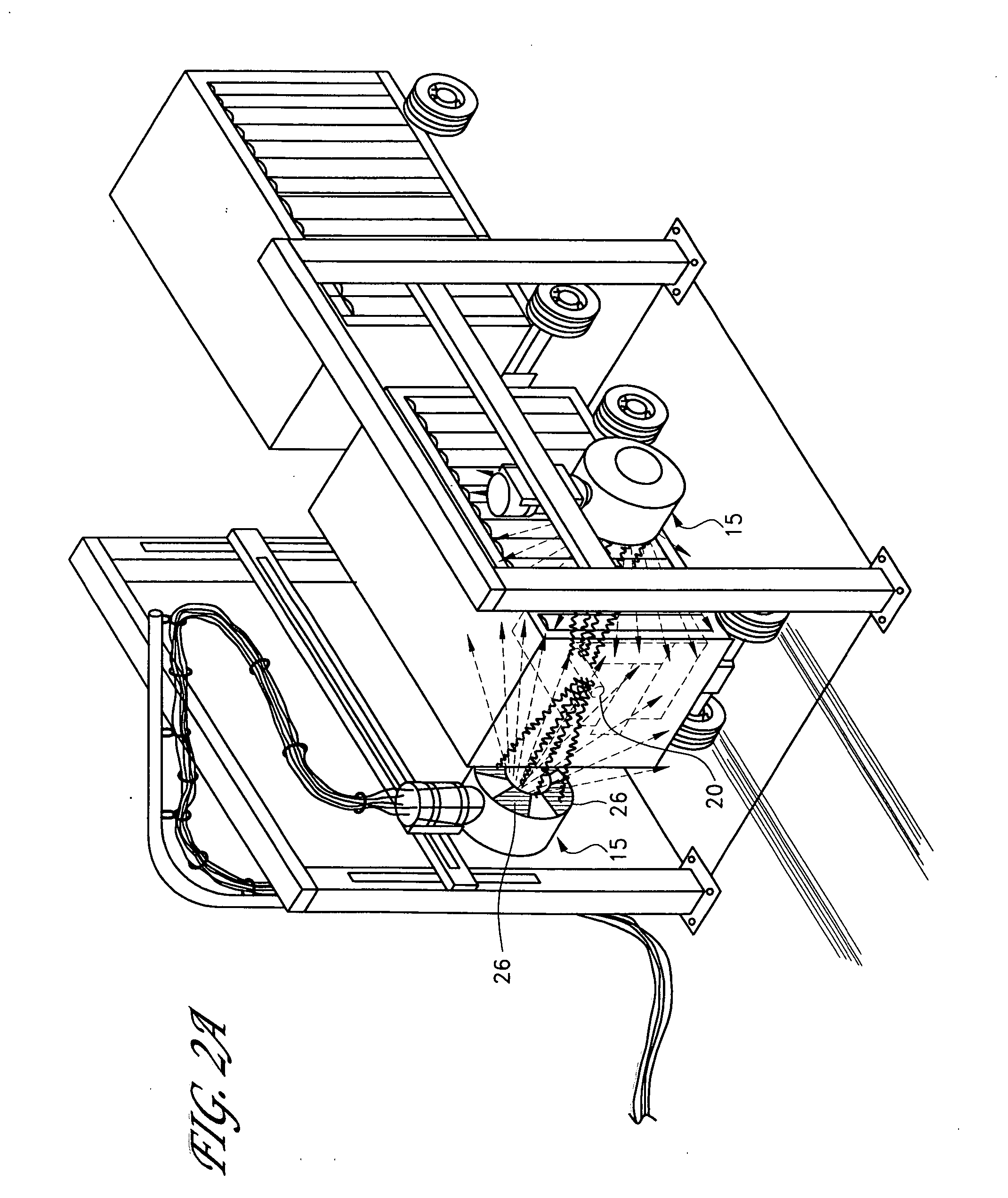Hybrid stoichiometric analysis and imaging using non-thermal and thermal neutrons
a neutron and hybrid technology, applied in the field of chemical compound detection and analysis, can solve the problems of high inefficiency, high detection speed, and inability to use, and achieve high detection speed, temporal and spatial resolution, and high energy. the effect of resolution
- Summary
- Abstract
- Description
- Claims
- Application Information
AI Technical Summary
Benefits of technology
Problems solved by technology
Method used
Image
Examples
first embodiment
[0048]FIG. 1 shows the particle detection and analysis apparatus of the present invention. As shown in the Figure, an accelerated beam 10 containing one or more subatomic species (here, various ionized isotopes of hydrogen including deuterium and tritium) are used to bombard one or more specially constructed targets 18, thereby generating streams of subatomic particles (fast neutrons 14 and alpha particles 16) which simultaneously, in pairs, emanate from the target(s) 18 in substantially opposite directions. A conventional or advanced charged particle accelerator of the type well known in the art, such as the Model A-711 accelerator manufactured by the MF Physics Corporation, is used as the source 15 although a variety of different such sources may be used with equal success. In the present embodiment, the source 15 is operated in a continuous direct current (i.e., DC) mode such that excitation particles are incident on the target(s) continually which may or may not be modulated int...
second embodiment
[0056] In the aforementioned apparatus (shown in FIG. 4), individual atomic species resident in the excitation beam 10 are separated through the application of a magnetic field 40 induced along the beam path in order to permit the excitation of more than one target 18. Specifically, the excitation beam produced by the aforementioned source 15 contains a plurality of atomic species including deuterons and tritium ions, each having different atomic mass number. As is well understood in the physical sciences, a charged particle passing through a magnetic field experiences a deflecting force, the magnitude and direction of which is determined by the particle's charge and mass, and the strength and direction of the magnetic field vector at that given location. Hence, particles of different atomic mass but of the same kinetic energy can be deflected along curved paths of different radii utilizing the same magnetic field. In the present embodiment, two atomic species are deflected using a ...
PUM
| Property | Measurement | Unit |
|---|---|---|
| energy | aaaaa | aaaaa |
| time resolution | aaaaa | aaaaa |
| charge collection time | aaaaa | aaaaa |
Abstract
Description
Claims
Application Information
 Login to View More
Login to View More - R&D
- Intellectual Property
- Life Sciences
- Materials
- Tech Scout
- Unparalleled Data Quality
- Higher Quality Content
- 60% Fewer Hallucinations
Browse by: Latest US Patents, China's latest patents, Technical Efficacy Thesaurus, Application Domain, Technology Topic, Popular Technical Reports.
© 2025 PatSnap. All rights reserved.Legal|Privacy policy|Modern Slavery Act Transparency Statement|Sitemap|About US| Contact US: help@patsnap.com



